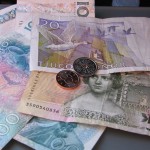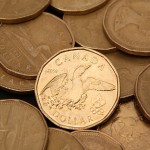Yesterday’s trade saw USD/JPY within the range of 122.42-123.64. The pair closed at 123.61, soaring 0.91% on a daily basis, while marking a third consecutive day of gains. The daily high has also been the highest level since July 2nd, when the cross registered a high of 123.75.
At 9:07 GMT today USD/JPY was down 0.03% for the day to trade at 123.41. The pair touched a daily low at 123.20 at 5:40 GMT.
Fundamentals
United States
Retail Sales
Retail sales in the United States probably rose 0.3% in June on a monthly basis, according to the median forecast by experts. In May retail sales recorded a 1.2% climb, which has been the largest monthly increase since March 2014, when sales went up 1.5%. This result was supported by purchases of automobiles, food and gasoline. Sales at gasoline stations rose the most in May (+3.7%), followed by sales of building materials and garden equipment (+2.1%), sales of motor vehicles and parts (+2%), sales at clothing and footwear stores (+1.5%) and sales at non-store retailers (+1.4%), according to the report by the US Census Bureau.
Annualized retail sales climbed 2.7% in May, or the strongest annual rate since January, after in April sales increased 1.5%.
The report on retail sales reflects the dollar value of merchandise sold within the retail trade by taking a sampling of companies, operating in the sector of selling physical end products to consumers. The retail sales report encompasses both fixed point-of-sale businesses and non-store retailers, such as mail catalogs and vending machines. The Census Bureau, which is a part of the Department of Commerce, surveys about 5 000 companies of all sizes, from huge retailers such as Wal-Mart to independent small family firms.
US core retail sales, or retail sales ex autos, probably went up 0.5% in June compared to a month ago, following a 1.0% surge in May. If so, this would be the fourth consecutive month of core sales increase. This indicator removes large ticket prices and historical seasonality of automobile sales.
The retail sales index is considered as a coincident indicator, thus, it reflects the current state of the economy. It is also considered a pre-inflationary indicator, which investors can use in order to reassess the probability of an interest rate hike or cut by the Federal Reserve Bank. In addition, this indicator provides key information regarding consumer spending trends. Consumer expenditures, on the other hand, account for almost two-thirds of the US Gross Domestic Product. Therefore, a larger-than-expected rate of increase in sales would certainly boost the US dollar. The official report is due out at 12:30 GMT.
Yellens testimony
Federal Reserve Chair Janet Yellen suggested in a Friday speech on the US economic outlook that the central bank remains on course to begin gradually raising interest rates this year. She underscored the labor market was still weak, but also added that the US economy is expected to grow steadily for the remainder of the year. Yellen is expected to provide more signals of the projected rate hike at her semi-annual testimony to Congress later during the week.
“The dollar should have a relatively easy time topping 124 yen, especially if Yellen sounds hawkish during the testimony,” said Junichi Ishikawa, market analyst at IG Securities in Tokyo, cited by Reuters. “Breaching 125 yen, however, is a different story. Japanese authorities have spoken out when the dollar nears 125.”
Bond Yield Spread
The yield on Japanese 2-year government bonds went as high as 0.028% on July 13th, after which it slid to 0.010% at the close to remain unchanged on a daily basis.
The yield on US 2-year government bonds climbed as high as 0.685% on July 13th, or the highest level since July 2nd (0.716%), after which it fell to 0.681% at the close to gain 4.4 basis points (0.044 percentage point) for the day.
The spread between 2-year US and 2-year Japanese bond yields, which reflects the flow of funds in a short term, expanded to 0.671% on July 13th from 0.635% on July 10th. The July 13th spread has been the most notable one since July 1st, when the difference was 0.687%.
Meanwhile, the yield on Japan’s 10-year government bonds soared as high as 0.459% on July 13th, after which it slid to 0.436% at the close to lose 1.4 basis points (0.014 percentage point) compared with July 10th.
The yield on US 10-year government bonds climbed as high as 2.470% on July 13th, or the highest level since July 2nd (2.470%), after which it slipped to 2.448% at the close to add 4.7 basis points (0.047 percentage point) on a daily basis, while marking a third consecutive day of gains.
The spread between 10-year US and 10-year Japanese bond yields widened to 2.012% on July 13th from 1.951% on July 10th. The July 13th yield difference has been the largest one in more than two months.
Pivot Points
According to Binary Tribune’s daily analysis, the central pivot point for the pair is at 123.22. In case USD/JPY manages to breach the first resistance level at 124.03, it will probably continue up to test 124.44. In case the second key resistance is broken, the pair will probably attempt to advance to 125.25.
If USD/JPY manages to breach the first key support at 122.81, it will probably continue to slide and test 122.00. With this second key support broken, the movement to the downside will probably continue to 121.59.
The mid-Pivot levels for today are as follows: M1 – 121.80, M2 – 122.41, M3 – 123.02, M4 – 123.63, M5 – 124.24, M6 – 124.85.
In weekly terms, the central pivot point is at 122.02. The three key resistance levels are as follows: R1 – 123.67, R2 – 124.58, R3 – 126.23. The three key support levels are: S1 – 121.11, S2 – 119.46, S3 – 118.55.





